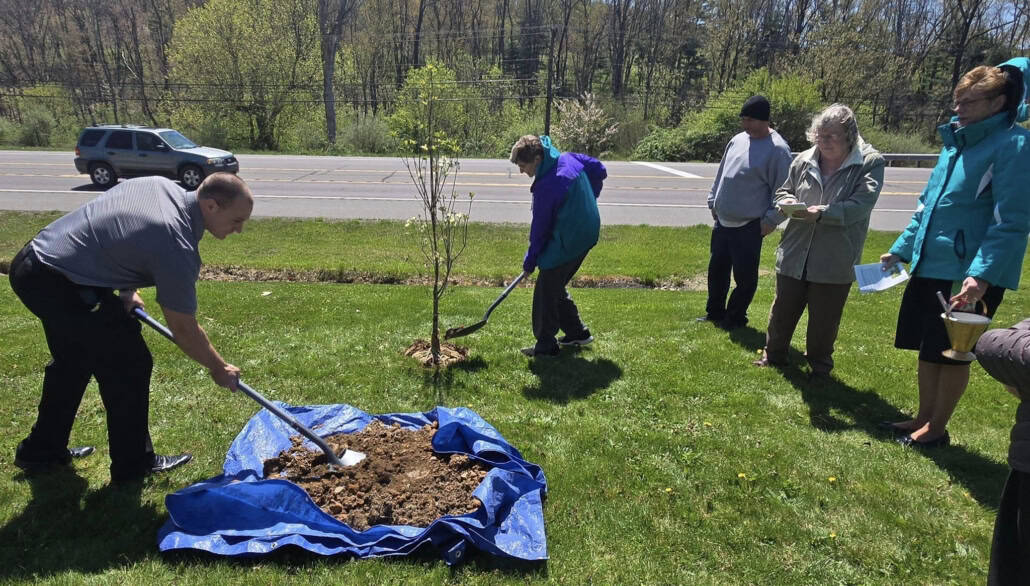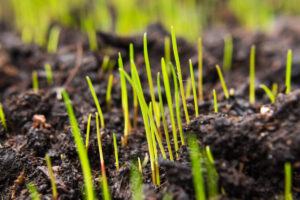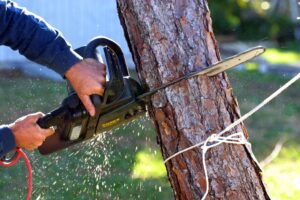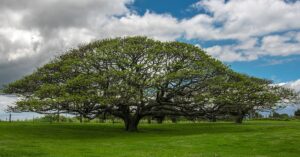Tree Preservation in Wales: A Comprehensive Guide
Introduction: The Green Heritage of Wales
When you think of Wales, you might envision rolling hills, rugged coastlines, and ancient castles standing against dramatic landscapes. But there’s another defining feature of this Celtic nation that deserves just as much attention: its magnificent trees. From the ancient yews that have witnessed centuries of Welsh history to the verdant woodlands that carpet the countryside, trees are an integral part of Wales’s natural and cultural heritage.
Tree preservation in Wales isn’t just about aesthetics or environmental conservation—it’s about protecting living monuments that connect the present to the past. Some Welsh trees have stood witness to the rise and fall of kingdoms, the industrial revolution, and the evolution of modern society. They’ve provided shelter, resources, and inspiration to generations of Welsh people and visitors alike.
As climate change concerns intensify and biodiversity faces unprecedented threats, the importance of preserving these arboreal treasures has never been more critical. Whether you’re a property owner in Wales, a visitor with a passion for nature, or simply someone interested in conservation efforts, understanding the mechanisms and importance of tree preservation in this unique part of the United Kingdom can offer valuable insights.
This comprehensive guide delves into the legal frameworks, cultural significance, ecological benefits, and practical aspects of tree preservation in Wales. You’ll discover how Welsh legislation protects notable trees, how you can identify trees under protection, and what responsibilities and rights you have when it comes to trees on or near your property. You’ll also learn about the remarkable stories of some of Wales’s most celebrated trees and the ongoing efforts to ensure that future generations can continue to benefit from their presence.
The Legal Framework for Tree Preservation in Wales
Understanding Tree Preservation Orders (TPOs)
In Wales, the primary legal mechanism for protecting trees is the Tree Preservation Order (TPO). These orders are issued by local planning authorities (LPAs) to protect specific trees, groups of trees, or woodlands that provide significant amenity value to the local area. A TPO makes it a criminal offense to cut down, top, lop, uproot, willfully damage, or willfully destroy a protected tree without the permission of the local planning authority.
The legal basis for TPOs in Wales has evolved over time. Originally established under the Town and Country Planning Act 1947, the current regulations governing TPOs in Wales are contained in the Town and Country Planning (Trees) Regulations 1999, as amended for Wales. In 2012, Wales gained the ability to create its own planning legislation, leading to some divergence from the systems in England.
You should be aware that TPOs can apply to any type of tree (with a few exceptions like fruit trees when in commercial orchards) and can be issued for individual trees, groups of trees, or entire woodlands. When a TPO is placed on a tree or group of trees, the local planning authority must follow specific procedures, including notifying the landowner and allowing for objections to be made.
The Welsh Government’s planning portal provides detailed information about TPOs and how they operate in Wales. According to the guidance available at https://gov.wales/tree-preservation-orders-guide-system-wales, TPOs should be used to protect selected trees if their removal would have a significant negative impact on the local environment and its enjoyment by the public.
Conservation Areas and Tree Protection
Beyond TPOs, trees in Wales receive additional protection if they’re located within designated Conservation Areas. These are areas of special architectural or historic interest, the character or appearance of which it is desirable to preserve or enhance. In Conservation Areas, anyone proposing to cut down, top, or lop a tree with a stem diameter of more than 75mm (measured at 1.5m above ground level) must give the local planning authority six weeks’ notice before doing so. This allows the authority to consider whether a TPO should be made to protect the tree.
This requirement doesn’t apply if the tree is already protected by a TPO, is dead, dying, or dangerous, or if it falls within certain size exemptions. However, you should always check with your local planning authority before undertaking any work on trees in Conservation Areas, as unauthorized work can result in significant fines.
Ancient, Veteran, and Notable Trees
Wales boasts some truly remarkable ancient trees that have special protections. An ancient tree is one that has passed beyond maturity and is old, or aged, in comparison with other trees of the same species. Veteran trees show features of biological, cultural, or aesthetic value typically associated with older trees, and notable trees are those considered significant in their local environment.
These special trees receive additional consideration in the planning system. The Welsh Government’s Planning Policy Wales (PPW) specifically mentions the importance of ancient and semi-natural woodlands and individual ancient, veteran, and notable trees. These trees often have protection through TPOs but may also be protected through other designations, such as Sites of Special Scientific Interest (SSSIs).
The Ancient Tree Inventory, maintained by the Woodland Trust in partnership with other organizations, records the location of ancient trees throughout Wales and the rest of the UK. This database serves as an important resource for identifying and protecting these living monuments. You can explore this inventory at the Woodland Trust’s website to discover remarkable ancient trees near you.

Recent Legislative Changes Affecting Tree Preservation
In recent years, Wales has introduced several legislative innovations that indirectly strengthen tree protection. The Well-being of Future Generations (Wales) Act 2015 places a duty on public bodies in Wales to consider the long-term impact of their decisions, to prevent problems, and take a more joined-up approach. This includes considering the environmental impacts of decisions, which has implications for tree preservation.
Additionally, the Environment (Wales) Act 2016 introduced a framework for the sustainable management of natural resources, including trees and woodlands. This legislation requires Natural Resources Wales to prepare a State of Natural Resources Report and area statements that identify priorities and opportunities for sustainable management of natural resources, including trees.
Most recently, in 2023, the Welsh Government intensified its focus on tree protection through amendments to various planning regulations, emphasizing the role of trees in climate resilience and biodiversity conservation. These changes have made it more difficult to remove mature trees during development projects and have increased the penalties for unauthorized tree removal.
Ecological Importance of Welsh Trees and Woodlands
Biodiversity Hotspots: Trees as Ecosystems
Welsh trees serve as crucial biodiversity hotspots, supporting numerous species of flora and fauna. A single mature oak tree can support over 2,300 species, including birds, insects, fungi, lichens, mosses, and mammals. This extraordinary level of biodiversity makes trees vital components of Wales’s ecological health.
The Celtic rainforests of Wales, also known as temperate rainforests or Atlantic woodlands, are particularly important ecosystems. These ancient woodlands are characterized by high rainfall, mild temperatures, and minimal temperature fluctuations, creating perfect conditions for rare bryophytes (mosses and liverworts), lichens, and fungi. Locations like Snowdonia National Park contain some of the best examples of these rare habitats in Europe.
Research conducted by Natural Resources Wales has documented the exceptional biodiversity value of Welsh woodlands. Their surveys have revealed that Welsh woodlands support over 250 species of lichen that are of international importance, more than 75 species of breeding birds, and numerous rare invertebrates that depend on specific tree species or deadwood habitats.
Carbon Sequestration and Climate Change Mitigation
Trees play a vital role in mitigating climate change by sequestering carbon dioxide from the atmosphere. Welsh woodlands currently store approximately 66 million tonnes of carbon, with an additional 10 million tonnes stored in the soil beneath these wooded areas. Each year, these woodlands sequester about 1.84 million tonnes of CO2, helping to offset Wales’s carbon emissions.
The table below illustrates the carbon sequestration capacity of different types of Welsh woodlands:
| Woodland Type | Average Carbon Sequestration (tonnes CO2 per hectare per year) | Total Area in Wales (hectares) | Total Annual Sequestration (tonnes CO2) |
|---|---|---|---|
| Oak-dominated broadleaf | 5.4 | 28,500 | 153,900 |
| Mixed broadleaf | 6.2 | 67,000 | 415,400 |
| Conifer plantation | 12.8 | 98,000 | 1,254,400 |
| New native woodland (< 20 years) | 2.3 | 8,600 | 19,780 |
| Total | – | 202,100 | 1,843,480 |
Source: Data compiled from Natural Resources Wales reports and Forestry Commission statistics
This impressive carbon sequestration capacity makes Welsh woodlands a critical asset in the nation’s efforts to achieve net-zero carbon emissions by 2050. Preserving existing mature trees is particularly important, as older trees generally sequester more carbon than younger ones, and it can take decades for newly planted trees to achieve comparable rates of carbon capture.
Ecosystem Services: Beyond Carbon and Wildlife
Trees in Wales provide a wide range of ecosystem services beyond carbon sequestration and biodiversity support. These include:
Flood Mitigation: Trees intercept rainfall, reduce surface runoff, and increase soil infiltration rates, helping to mitigate flood risks. This is particularly important in Wales, which experiences high rainfall and has many communities located in flood-prone valleys. Studies by the Welsh Government’s Flood Risk Management Program have shown that strategically placed woodland can reduce peak flood flows by up to 40% in small catchments.
Air Quality Improvement: Trees filter pollutants from the air, improving air quality in both urban and rural areas. Research conducted in Cardiff has demonstrated that urban trees remove approximately 350 tonnes of air pollutants annually, including particulate matter, ozone, nitrogen dioxide, and sulfur dioxide.
Soil Protection: Tree roots bind soil particles together, reducing erosion and landslides. This is especially important in Wales’s mountainous regions, where soil erosion can have significant impacts on water quality and agricultural productivity.
Water Quality Enhancement: Riparian woodland (trees growing alongside water bodies) helps filter pollutants from water, reduces water temperature through shading, and provides critical habitat for aquatic species. The Welsh Government’s Woodlands for Water initiative aims to increase riparian tree cover specifically to improve water quality in key catchments.
Health and Wellbeing Benefits: Access to wooded environments has been linked to improved mental and physical health outcomes. Research conducted by the Welsh NHS has found that programs involving regular activities in woodland settings have resulted in reduced symptoms of depression and anxiety, improved physical fitness, and enhanced social connections.
Cultural and Historical Significance of Welsh Trees
Sacred and Mythological Trees in Welsh Culture
In Welsh mythology and folklore, trees hold a special place of reverence and have been central to cultural and spiritual practices for millennia. The ancient Celts, including those who inhabited Wales, considered certain trees sacred and attributed special powers to them. Oak, ash, and hawthorn were particularly revered, and many customs and superstitions regarding these trees persist in Welsh cultural memory.
The oak, known as “derwen” in Welsh, was considered the king of trees and associated with strength, wisdom, and endurance. Major decisions were often made beneath oak trees, and the wood was used for important ceremonial objects. Some ancient oak trees in Wales, such as the Pontfadog Oak (which sadly fell in 2013 after standing for over 1,200 years), served as community gathering places for centuries.
Yew trees, found in many Welsh churchyards, have connections to both pre-Christian and Christian traditions. Their extreme longevity (some Welsh yews are estimated to be over 3,000 years old) made them symbols of immortality and regeneration. The yew at St. Cynog’s Church in Defynnog is among the oldest living things in Britain, with estimates of its age ranging from 2,000 to 5,000 years.
Hawthorn, particularly the “May blossom,” features prominently in Welsh folklore as a tree associated with fairy folk or “Tylwyth Teg.” Traditional beliefs held that disturbing a lone hawthorn, especially one growing at a crossroads or on a hilltop, could bring misfortune.

Famous Welsh Trees and Their Stories
Wales is home to numerous trees of exceptional historical importance, many of which have fascinating stories attached to them. Here are just a few examples:
The Llangernyw Yew: Standing in the churchyard of St. Digain’s Church in the village of Llangernyw, Conwy, this ancient yew is estimated to be between 4,000 and 5,000 years old, making it potentially one of the oldest living organisms in Europe. It was already ancient when the Romans arrived in Britain and continues to produce new growth today.
The Brimmon Oak: This 500-year-old oak near Newtown became a symbol of modern tree preservation activism when a local campaign to save it from destruction during a road development project gained national attention in 2016. The road design was eventually altered to spare the tree, demonstrating the growing public support for preserving notable trees in Wales.
The Nannau Oak: Though no longer standing, this tree was the subject of one of Wales’s most famous tree legends. According to the tale, Howel Sele, a cousin and enemy of the Welsh prince Owain Glyndŵr, was killed by Glyndŵr and hidden inside the hollow trunk of this oak in 1402. The body was allegedly discovered nearly 40 years later when the tree fell in a storm. The tree became known as “The Spirit’s Blasted Tree” and inspired artwork and literature before it finally fell in 1813.
The Giants of Nannau: This collection of ancient oak trees in the former park of Nannau House in Gwynedd includes specimens over 1,000 years old. These trees are remnants of an ancient wood pasture system and represent some of the oldest living things in Wales.
Trees in Welsh Literature, Art, and Place Names
Trees have profoundly influenced Welsh culture, appearing prominently in literature, art, and even place names. In medieval Welsh poetry, trees often appear as symbols of strength, endurance, and natural beauty. The Cad Goddeu (The Battle of the Trees) is a famous medieval Welsh poem that portrays trees as warriors, highlighting their cultural significance.
Welsh place names frequently reference trees, providing linguistic evidence of their historical importance. Names like Derwen (oak), Coed-duon (black wood, now Blackwood), Onllwyn (ash grove), and Llwynypia (magpie grove) all indicate the presence of significant trees or woodlands that were important enough to name settlements after.
In visual arts, Welsh landscapes featuring distinctive trees have inspired generations of artists. From the romantic paintings of Richard Wilson in the 18th century to contemporary photographers documenting ancient trees, these arboreal subjects continue to captivate creative minds.
Threats to Welsh Trees and Conservation Challenges
Climate Change Impacts on Welsh Woodlands
Climate change presents one of the most significant threats to Welsh trees and woodlands. Rising temperatures, changing precipitation patterns, and increased frequency of extreme weather events are already affecting tree health and woodland composition across Wales.
Research conducted by Forest Research and Cardiff University indicates that Wales can expect several climate-related impacts on its tree populations:
Drought Stress: While Wales is known for its rainfall, climate models predict increased summer droughts, particularly in eastern Wales. Species like beech, which are sensitive to drought, may struggle in these conditions. The 2018 summer drought provided a preview of potential impacts, with significant dieback observed in beech woodlands across Wales.
New Pests and Diseases: Warmer temperatures create more favorable conditions for certain pest species and pathogens. The oak processionary moth, previously unable to survive Welsh winters, has begun to appear in southeastern Wales as temperatures rise. Similarly, Phytophthora ramorum, which affects larch and other species, has spread more rapidly during milder, wetter winters.
Phenological Shifts: Changes in the timing of seasonal events like leaf emergence, flowering, and seed production have been documented in Welsh woodlands. A study by the Woodland Trust found that oak leafing in Wales now occurs, on average, two weeks earlier than it did in the 1950s. These shifts can disrupt ecological relationships, particularly between trees and the wildlife that depends on them.
Storm Damage: Increased frequency and intensity of winter storms pose direct physical threats to trees. The winter of 2023-2024 saw several named storms cause significant damage to Welsh woodlands, including the loss of numerous veteran and notable trees.
The table below summarizes projected climate change impacts on key Welsh tree species:
| Tree Species | Current Prevalence in Wales | Projected Climate Change Impact | Adaptation Potential |
|---|---|---|---|
| Sessile Oak (Quercus petraea) | High – native dominant | Moderate negative impact | Medium – relatively drought-tolerant |
| Common Beech (Fagus sylvatica) | Medium – widespread but not native | Severe negative impact in eastern Wales | Low – drought-sensitive |
| Sitka Spruce (Picea sitchensis) | Very high – dominant commercial species | Moderate to severe negative impact | Low – vulnerable to drought and storms |
| Scots Pine (Pinus sylvestris) | Low – limited native stands | Minimal impact to slight benefit | High – tolerant of varied conditions |
| Sweet Chestnut (Castanea sativa) | Low – scattered populations | Potential benefit from warming | High – drought-tolerant |
Pests, Diseases, and Invasive Species
The health of Welsh trees faces significant challenges from an increasing number of pests, diseases, and invasive species, many of which have been introduced through global trade and travel.
Ash Dieback (Hymenoscyphus fraxineus): This fungal disease has devastated ash populations across Europe and was first confirmed in Wales in 2012. Current estimates suggest that over 80% of Welsh ash trees will be severely affected or killed by the disease, with profound impacts on landscapes and biodiversity. Ash is Wales’s third most common broadleaf tree, making this disease particularly impactful.
Phytophthora Diseases: Several Phytophthora species threaten Welsh trees. Phytophthora ramorum has led to the felling of millions of larch trees in Wales, while Phytophthora kernoviae affects beech and other native species. Phytophthora alni targets alder trees, which play important roles in Welsh riparian ecosystems.
Oak Decline: A complex condition involving both biotic and abiotic factors, oak decline is affecting both of Wales’s native oak species. Symptoms include crown thinning, branch dieback, and eventually tree death. Given the ecological importance of oak in Welsh woodlands, this condition poses a significant concern.
Invasive Non-Native Plants: Species like Rhododendron ponticum, Japanese knotweed, and Himalayan balsam can out-compete native vegetation and prevent tree regeneration. Rhododendron is particularly problematic in Welsh woodlands, creating dense shade that prevents the growth of native ground flora and tree seedlings. Natural Resources Wales estimates that controlling rhododendron in Snowdonia National Park alone would cost over £11 million.

Land Use Pressures and Development
Despite legal protections, Welsh trees and woodlands continue to face pressures from changing land use and development. These include:
Urban Expansion: As Welsh towns and cities grow, urban and peri-urban trees often face removal for development. Although planning policies generally encourage tree retention, practical considerations sometimes lead to the loss of mature trees, which are replaced with younger specimens that take decades to provide equivalent ecological benefits.
Agricultural Intensification: Changes in farming practices have led to the removal of hedgerows and field trees in some parts of Wales. Between 1984 and 2007, Wales lost approximately 24% of its hedgerows, many of which contained mature trees. Recent agricultural policies have begun to reverse this trend, but the pressure remains.
Infrastructure Projects: Major infrastructure developments, including road schemes and renewable energy projects, can result in woodland fragmentation and tree loss. While mitigation measures like compensatory planting are typically required, the immediate ecological impact of losing mature trees remains significant.
Recreational Pressure: As outdoor recreation increases in popularity, some Welsh woodlands are experiencing impacts from visitor pressure. Soil compaction around the root zones of popular trees, damage to bark, and litter can all affect tree health in heavily visited areas.
Best Practices in Tree Preservation and Management
Sustainable Woodland Management Techniques
Effective preservation of Welsh trees often depends on active management rather than simple protection. Sustainable woodland management techniques help maintain healthy, resilient tree populations while providing economic, social, and environmental benefits.
Continuous Cover Forestry (CCF): This approach, increasingly adopted in Wales, moves away from clear-felling toward selective harvesting that maintains permanent forest cover. CCF mimics natural processes, creating diverse, multi-aged woodland structures that are more resilient to climate change and disease. Natural Resources Wales has implemented CCF in several of its woodland estates, including parts of the Wye Valley.
Veteran Tree Management: Specialist techniques help prolong the lives of ancient and veteran trees. These include halo thinning (removing competing vegetation around the tree), retrenchment pruning (mimicking the natural process by which old trees reduce their crown size), and managing visitor access to prevent soil compaction. Organizations like the Ancient Tree Forum provide guidance specific to Welsh veteran trees, taking into account local species and conditions.
Natural Regeneration: Rather than relying solely on tree planting, many Welsh woodland managers now encourage natural regeneration where appropriate. This promotes genetic diversity and local adaptation, as naturally regenerated trees tend to be well-suited to local conditions. In some cases, temporary fencing to exclude browsing animals may be necessary to allow seedlings to establish.
Traditional Management Techniques: Historical practices like coppicing and pollarding are being revived for both conservation and commercial purposes. These techniques, which involve cutting trees in ways that promote regrowth, can extend tree lifespans while providing sustainable timber and creating valuable wildlife habitats. The “Fferm Ifan” project in North Wales has successfully reintroduced traditional management to farm woodlands, benefiting both biodiversity and the rural economy.
Community Involvement in Tree Preservation
Across Wales, communities are playing increasingly important roles in tree preservation efforts. This grassroots involvement not only helps protect trees but also strengthens community connections to local natural heritage.
Community Woodland Groups: Over 150 community woodland groups are now active across Wales, managing woodlands for conservation, recreation, education, and sometimes small-scale timber production. The Llais y Goedwig (Voice of the Woodland) network supports these groups, facilitating knowledge sharing and providing resources.
Tree Warden Schemes: Several Welsh local authorities have established Tree Warden programs, where volunteers help monitor protected trees, report potential threats, and raise awareness about tree preservation in their communities. In Wrexham County Borough, Tree Wardens have successfully identified several notable trees that subsequently received TPO protection.
Citizen Science Projects: Initiatives like the Ancient Tree Inventory rely heavily on public participation to identify and record important trees. Since 2007, Welsh volunteers have contributed thousands of records to this database, significantly improving understanding of the distribution and condition of ancient trees in Wales.
Community Tree Nurseries: Local tree nurseries growing stock from locally collected seed help preserve genetic diversity and produce trees well-adapted to local conditions. The Dyfi Seed Hub in mid-Wales collects, processes, and grows trees from local provenance, supplying stock for restoration projects throughout the region.
Tree Care for Property Owners
If you own property in Wales with trees, you have both responsibilities and opportunities regarding their care and preservation. Here are some practical guidelines:
Know Your Legal Obligations: If trees on your property are protected by TPOs or located in a Conservation Area, you must obtain permission before carrying out work on them. Even for unprotected trees, you have a duty of care to ensure they don’t pose a risk to people or property. You can check whether trees are protected by contacting your local planning authority or using their online planning portal.
Regular Inspections: Having trees professionally inspected every 3-5 years (more frequently for older or potentially hazardous trees) helps identify problems early. A qualified arboriculturist can provide guidance on necessary maintenance while ensuring compliance with relevant regulations. The Arboricultural Association maintains a directory of approved contractors in Wales.
Proper Pruning Practices: If pruning is necessary, following best practices helps maintain tree health. This includes pruning during dormant seasons when possible, making clean cuts that don’t damage the branch collar, and avoiding removing more than 25% of the canopy in a single year. For protected trees, always ensure you have proper permission before beginning any work.
Protecting Trees During Construction: If you’re undertaking building work near trees, implementing appropriate protection measures is essential. This typically involves establishing root protection areas where soil compaction, excavation, and material storage are prohibited. British Standard BS5837:2012 provides detailed guidance on tree protection during development, and your local planning authority may require adherence to these standards as a condition of planning permission.
Planting for the Future: Consider planting new trees to ensure continued tree cover for future generations. Choosing appropriate species for your location, considering factors like soil type, available space, and climate projections for the coming decades, will help ensure success. The “Right Tree, Right Place” principle is particularly important in the face of climate change.

The Future of Tree Preservation in Wales
Policy Developments and Legislative Trends
Welsh tree preservation policy continues to evolve, with several important developments shaping its future direction:
The Welsh Government Woodland Estate Policy (2023): This policy commits to retaining the Welsh Government Woodland Estate in public ownership and managing it for public benefit. It emphasizes the role of these woodlands in addressing climate emergency, nature recovery, and green growth. The policy creates a presumption against woodland loss, setting a high bar for any proposals that would result in deforestation.
National Forest for Wales Initiative: Launched in 2020, this ambitious program aims to create a connected network of forests spanning the length of Wales. Unlike traditional forestry approaches focused on compact plantations, the National Forest concept encourages creation and restoration of diverse woodland types across different landscapes and ownerships. The initiative includes significant funding for both public and private tree planting and woodland restoration.
Enhancement of TPO Regulations: Recent consultations indicate that Welsh Government plans to strengthen TPO regulations, potentially increasing penalties for violations and streamlining the process for issuing emergency orders to protect threatened trees. These changes reflect growing recognition of the value of mature trees and the limitations of replacement planting as mitigation for their loss.
Integration with Broader Environmental Policies: Tree preservation is increasingly being integrated with policies addressing climate change, flood management, and biodiversity recovery. The Welsh Government’s Nature Recovery Action Plan specifically identifies expansion of native woodland cover and improved woodland management as key actions for biodiversity enhancement.
Innovations in Tree Preservation Technology
Technological advances are enhancing capacity to monitor, protect, and manage Welsh trees:
Remote Sensing and GIS Mapping: Aerial imagery, LiDAR (Light Detection and Ranging), and satellite data are being used to map woodland cover, monitor changes over time, and identify potential ancient trees based on crown characteristics. Natural Resources Wales now employs these technologies to detect unauthorized tree removal in protected woodlands.
DNA Banking for Heritage Trees: The National Botanic Garden of Wales and Woodland Trust have collaborated on a project to collect and preserve genetic material from ancient and veteran Welsh trees. This DNA banking creates the potential for future propagation of trees with genetic lineages stretching back centuries or millennia.
Advanced Diagnostic Tools: New technologies for detecting tree diseases at early stages are being deployed across Wales. These include molecular testing kits that can identify pathogens before visual symptoms appear and acoustic detection devices that can identify internal decay in apparently healthy trees.
Digital Platforms for Citizen Engagement: Mobile applications like TreeCheck allow citizens to report sightings of tree pests and diseases, creating an early warning system that supplements official monitoring programs. Similarly, the Ancient Tree Inventory now has a mobile interface that makes recording significant trees more accessible to the public.
Research Priorities and Future Directions
Current research in Wales is addressing key knowledge gaps and developing solutions for emerging challenges:
Climate-Adapted Provenance Trials: Forest Research has established a network of trial sites across Wales testing tree species and seed sources from warmer, drier climates that might be better adapted to future Welsh conditions. Initial results suggest that incorporating genetic material from southern European populations may improve resilience in some native species.
The table below shows early results from these provenance trials for selected species:
| Species | Current Welsh Provenance Survival Rate (%) | Southern European Provenance Survival Rate (%) | Growth Rate Comparison | Disease Resistance Comparison |
|---|---|---|---|---|
| Sessile Oak | 94 | 87 | Southern 5% slower | Similar |
| Common Beech | 78 | 91 | Southern 12% faster | Southern significantly better |
| Scots Pine | 96 | 93 | Similar | Southern better against Dothistroma |
| Sweet Chestnut | 85 | 96 | Southern 15% faster | Southern better against Phytophthora |
| Silver Birch | 92 | 88 | Similar | Similar |
Source: Forest Research Wales Provenance Trial Network, 2023 Report
Urban Tree Management Research: With over 80% of Welsh residents living in urban environments, research into urban tree resilience has become a priority. Studies at Bangor University are investigating species selection, soil management techniques, and design solutions that maximize tree longevity in challenging urban conditions.
Ecosystem Service Valuation: Researchers at Cardiff University and elsewhere are developing more sophisticated models for quantifying the economic value of tree-related ecosystem services. This research aims to better incorporate these values into planning and policy decisions, potentially strengthening the case for tree preservation when weighing development tradeoffs.
Ash Dieback Recovery Strategies: Following the devastating impact of ash dieback, Welsh research institutions are investigating resilience factors in surviving ash trees and evaluating potential replacement species that could fulfill similar ecological roles in affected woodlands.
Conclusion: The Path Forward for Welsh Trees
Trees in Wales represent an extraordinary convergence of natural, cultural, and historical value. From ancient yews that were already old when the Roman legions arrived to newly planted community woodlands that will benefit future generations, Welsh trees connect past, present, and future in living, growing monuments.
The challenges facing these trees—from climate change and new diseases to development pressures and changing land use—are substantial. Yet there are also unprecedented opportunities arising from new technologies, evolving policies, and growing public awareness of the importance of trees to both human and ecological well-being.
Effective tree preservation in Wales requires a multifaceted approach combining robust legal protections, active management, community involvement, and continued research and innovation. It also demands recognition that trees exist within complex social and ecological systems, and their preservation must be balanced with other legitimate land uses and human needs.
As you consider the future of Welsh trees, whether as a property owner, conservation professional, policymaker, or simply someone who values these magnificent living organisms, the key message is one of active stewardship rather than passive protection. By understanding the legal frameworks, appreciating the ecological and cultural significance, addressing threats proactively, and engaging with the wider community, you can help ensure that the arboreal heritage of Wales continues to thrive for generations to come.
By working together—across jurisdictions, disciplines, and generations—Wales can maintain and enhance its reputation as a nation where trees are valued not just for what they provide, but for what they represent: resilience, connection, and the beautiful entanglement of human and natural history that defines this remarkable Celtic nation.
For more information on tree preservation orders and regulations in Wales, visit the Welsh Government’s official guidance at https://gov.wales/tree-preservation-orders-guide-system-wales.




